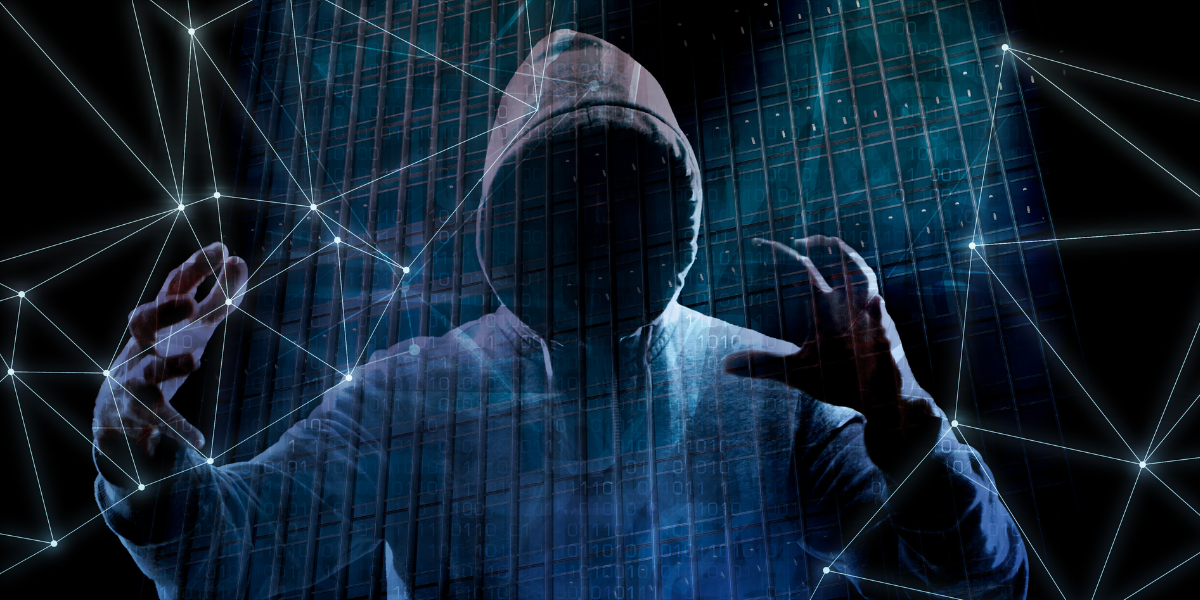The concept of using the Internet for criminal activity is not new, but as the world relies more and more on the digital ecosystem, cybercrime is a trend that can’t be ignored or managed without the right resources.
In this guide, we dive into the different types of cybercrime, as well as common examples, motivations, and the potential consequences they pose. By understanding these digital threats, security and IT teams can stay vigilant and better equipped to protect their digital ecosystem, and in turn, business operations.
What is Cybercrime?
“Cybercrime” refers to illegal activities with a computer or other networking equipment. Although some cybercrimes aim to harm their victim through capturing sensitive, most acts are ultimately commited for financial benefit. Businesses as a whole, and individual employees can be impacted by cybercrime.
Before discussing various types of cybercrime and best protection measures, look at some notable examples and how they affect every day internet users.
What is a well-known example of cybercrime?
As the reliance on digital workforces and virtual vendors has increased in recent years, data breaches and cyber attacks have matured. Hackers often play off current events or sensitive topics in their victims’ lives to try and trick them into falling for an attack. During the COVID-19 pandemic, cyber criminals created fraudulent websites pretending to sell high-demand goods like facemasks or COVID-19 tests in an effort to con unsuspecting victims out of their money.
Other common cybercrime examples are employee phishing attacks that target a businesses’ employees by mimicking email addresses belonging to HR, payroll, or bank-related contacts. Even as recently as early 2023, businesses are experiencing more and more phishing attacks targeting employees’ anxiety surrounding the state of the economy. Employees have reported receiving urgent emails from senders pretending to be from Paypal, MetaMask, or other bank account-related services, saying a recent payment failed or that there’s a problem with their account.
Five Common Types of Cybercrime
In order to best defend against cybercrime, it’s important to understand the most common types of cyber attacks, and what the motivation is behind them.
1. Phishing
In the always developing world of cybercrime, phishing is one of the most prevalent and deceptive tactics that’s been targeting businesses for many years. Phishing involves using fraudulent emails, messages, or websites that mimic reputable entities, such as banks or trusted vendors, to trick employees or individuals within an organization into revealing sensitive information or clicking into compromised links or attachments. Phishing can be conducted through social media accounts, emails, text messages, and more.
A subset of phishing is more specifically known as Business Email Compromise (BEC). This is when cybercriminals target businesses by impersonating executives or employees through fraudulent emails, tricking employees into revealing sensitive information, or making unauthorized financial transactions. BEC attacks have gained popularity because hackers have become more sophisticated, and are able to very closely mimic legitimate email addresses and body content. While phishing can be done through many different avenues, it’s important for businesses to specifically train employees to detect BEC attacks because of their common, yet still detrimental, attacks.
2. Ransomware
Ransomware is a dangerous cybercrime that targets businesses by compromising data or disrupting business operations and demanding a ransom in order for the attack to end. Cybercriminals often employ sophisticated techniques to spread ransomware. To protect against ransomware attacks, businesses should prioritize robust cybersecurity measures, including regular system updates, employee training, and data backups, to minimize the potential impact of a ransomware attack.
3. Malware
Malware, a pervasive cybercrime, poses a serious threat to businesses. This is when cybercriminals send harmful software meant to enter business computer networks or systems to steal data, mess with operations, or gain unauthorized access. Malware can enter business systems through various vectors, such as infected email attachments, compromised websites, or removable media.
4. Botnets
Networks of computers that have been infected with a bot are known as botnets. A bot is a kind of malware that enables an outside machine to use your computer’s resources.
5. Browser Hijacking
Browser hijacking is a form of cybercrime that involves unauthorized modification of web browsers, redirecting users to malicious websites, or injecting unwanted ads. This intrusive tactic compromises user privacy, exposes them to potential malware, and disrupts their browsing experience.
The Ultimate Goal: Dissecting Why Hackers Commit Cybercrimes
The purpose of cybercrimes can vary depending on the motives of the individuals or groups involved. Cybercrimes are generally committed for one of a few reasons: financial gain, data theft, operation disruption, espionage, and personal satisfaction or recognition.
Financial gain is the most common motive behind cybercrimes and has become quite lucrative for some hacking groups. Cybercrime has become so lucrative that it has led to the creation of cybercrime businesses, as well as classes for hackers to learn to successfully steal and sell data.
Data theft is another common purpose of cybercrimes, where cybercriminals aim to steal sensitive information like personal data, intellectual property, or trade secrets. This stolen data can be sold on the dark web, used for blackmail, held for ransomware, or employed for illegal activities.
Common mistakes businesses make that lead to cybercrime
Cybercriminals will often choose a quick technique to make a lot of money. They are on the lookout for businesses that announce recent financial prosperity (think funding rounds for startups, or businesses that release high-performing financial statements). They might preference businesses where money or sensitive data is part of the main business operations, like banks, casinos, financial corporations, or healthcare companies.
There are also other common mistakes businesses can make that make their networks more accessible to cybercriminals:
- Complex operating systems – Operating systems that are programmed with billions of lines of code manually by employees may leave gaps for costly human error. Cybercriminals can profit from these gaps.
- Inadequate employee training – While hardworking employees are critical to successful business operations, your workforce also is an avenue for cybercrime. As discussed earlier, cybercrime often targets human emotion, whether through urgently worded emails or deceptive attachments targeting your employees. It’s critical for your business to conduct regular employee cybersecurity training to both test their awareness of phishing emails and educate your workforce on what types of cybercrime might be targeting them.
- Manual cyber defense practices – There are many options out there for businesses to choose from when establishing cybersecurity defense programs, a lot of them involving manual scanning programs. Manual programs not only can allow for human error, but also can cause delays in response times when a threat occurs. Some manual practices are only run once a quarter, or once a year depending on the business, which leaves long gaps for cybercrime to go undetected.
How to Prevent Cybercrime
Preventing cybercrime requires a proactive approach, using a combination of technical measures and user awareness. Here are some critical steps to help prevent cybercrime:
1. Implement employee training
If you’ve held a full-time job at a job that requires work in email platform and digital tools, odds are you’ve been through cybersecurity awareness training. This is one of the most important steps a business can take to defend against cybercrime. Untrained staff members are a significant vulnerability, because your workforce is often the main line of defense and detection of cyber attacks. Yearly cybersecurity training, as well as internal phishing test attacks are two common employee training methods.
Your organization should also communicate out or hold training on the procedure for reporting signs of an attack, including who to contact when you receive a phishing email, what to do if you think your passwords have been compromised, and more.
2. Require strong passwords for business-related accounts
It might seem obvious, but protecting your business-related accounts, whether corporate or employee managed, with strong passwords is an important, and easy protection measure. Keep unique username and password combinations for each account, and avoid writing them down. You can take the following security measures to guard against password hacking:
- Avoid using keyboard patterns for passwords. e.g., qwertyui
- Avoid using easy combinations. e.g. – Jack1990, Feb1990
- Require password changes for corporate accounts every month or quarter
- Use a VPN provider to generate a unique password every time a user logs into their account
3. Analyze your cybersecurity performance for underlying trends
Another preventative measure to defend against cybercrime is to track cybersecurity-related activities on your network and analyze them over time. While it’s more of a long-term strategy, looking at your cybersecurity performance and how different attacks have targeted your business over time might surface new trends or threats you haven’t noticed before, and help your cybersecurity risk and IT teams discover the root cause of cybercrime impacting your network.
4. Actively monitor your company domain for cyber threats
Our final tip for effectively defending against cybercrime is to continuously monitor for and takedown cyber attacks. While some organizations do this manually, there are many cost-effective tools on the market to support business in domain management and monitor for brand infringement.
Bolster’s domain monitoring and AI-driven technology conducts daily scans to detect malicious domains and use of your brand across the internet. Bolster’s technology doesn’t require manual oversight; with best-in-class automated monitoring and threat takedown technology, business security teams can confidently integrate Bolster into their cybercrime protection program and trust that the tool will work effectively to take down domain threats.
Start Effectively Managing Your Online Brand Presence Today
Cybercrime poses a significant threat in today’s digital landscape. It is crucial to stay informed about these digital threats and proactively protect ourselves and our businesses. By implementing strong security practices, staying vigilant, and promoting a culture of cybersecurity attention, we can navigate the digital world confidently, and minimize the risks associated with cybercrime.
To learn more about how an automated solution can help protect your organization from cybercrime, visit www.bolster.ai.









